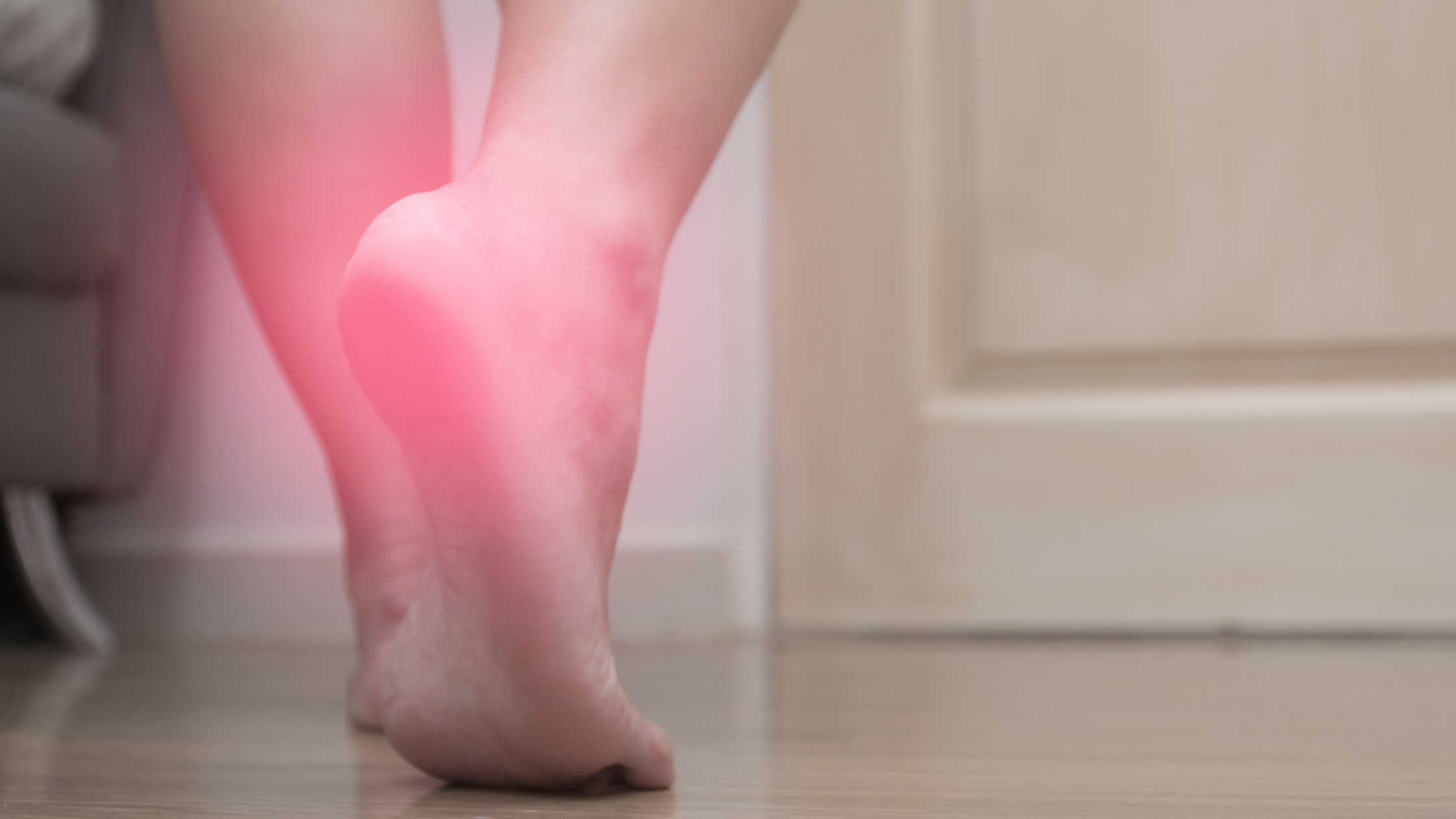
Plantar Fasciitis Symptoms and Treatments
One of the most common causes of heel pain is plantar fasciitis. This inflammation affects a band of tissue that runs along the bottom of your foot, connecting the toes to the heel bone. Pain may decrease throughout the day, but is typically more severe in the morning or after long periods of sitting. Our body weight rests on our feet - heel, toe, heel, toe. As the foot bears weight, it flattens and puts pressure on the plantar fascia. The plantar fascia pulls on the band of tissue that attaches the toes to the heel. If the foot is aligned, the pull does not cause problems. However, if the foot rolls outward at the ankle or the arch is not supported, there is an abnormal pull on the band of tissues, causing pain. Causes may include: Lack of arch support Weak ankles that roll Increase in activities: running, tennis, soccer Obesity Poor flexibility Standing for long periods of time Wearing shoes with little support and little cushioning When you have plantar fasciitis, it can feel like you have bruising or an ache in the bottom of your foot. The pain may be worse in the morning, but will diminish as you walk and move around. It is common for pain to return if you spend too much time on your feet. If the nerve become swollen, pain can radiate to the ankle. Without treatment or proper care, the plantar fascia may eventually tear. This torn area becomes filled with calcium, creating a heel spur. The foot can feel warm, tender, and swollen. Treatment options vary depending on the patient and the severity of their pain. Often, treatments are focused on reducing inflammation and pain. Physical therapy techniques, such as stretching and increasing range of motion, help reduce pain and prevent further injury. Other treatment options include: Rest - Taking a break from weight-bearing activities can reduce your pain. Elevating your foot when sitting reduces swelling. Orthotic shoe inserts - Use shoe inserts to reduce excess motion and to decrease strain on the plantar fascia. Splinting at night - wearing a splint at night keeps the plantar fascia stretched while you sleep to prevent pain in the morning. Ignoring foot pain can lead to ankle, hip, or back pain, so if you suffer from plantar fasciitis or other foot pain, it’s essential to see a physician. Our team provides non-invasive treatments instead of surgery to speed up healing time and reduce the need for a painful post-recover process. To learn more about how our team can help, contact us today!Causes of Plantar Fasciitis
Signs and Symptoms
Plantar Fasciitis Treatments
Quick Links
Schedule an Appointment
* indicates a required field.
